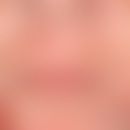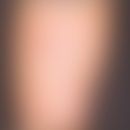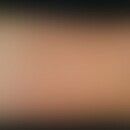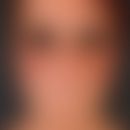Synonym(s)
Hay fever; Pollen allergy
DefinitionThis section has been translated automatically.
The symptoms of the disease caused by inhalation of pollen (especially flowering grasses, tree pollen, cereals, herb and flower pollen) in case of an existing pollen allergy. S.a. allergy, rhinitis allergica.
Occurrence/EpidemiologyThis section has been translated automatically.
About 15-20% of the German population suffer from pollen sensitization.
You might also be interested in
EtiopathogenesisThis section has been translated automatically.
With appropriate sensitization, the inhalation of aeroallergens leads to cross-linking of juxtaposed IgE molecules on tissue-based mast cells with consecutive liberation of preformed ( histamine, serotonin) and newly generated mediators (leukotrienes, prostaglandins, PAF). As a result, there is an increase in vascular permeability with the formation of a mucous membrane edema, increased blood circulation through stimulation of the mucous glands, and mucus secretion. Corresponding bronchial formation of bronchospasm, mucosal edema, secretion of tough mucus. The simultaneous release of eosinophilic and neutrophilic chemotactic factors leads to the influx of further inflammatory cells and possibly to the formation of a late phase reaction with perpetuation of the inflammation. The cytokines also released by the mast cells, in particular interleukin 4, promote allergisation. To trigger clinical symptoms, 10-50 pollen/m3 air is sufficient.
ManifestationThis section has been translated automatically.
Mainly occurring between the 2nd and 3rd decade of life, especially among the urban population.
LocalizationThis section has been translated automatically.
Especially affected are the upper airways and conjunctiva of the eyes.
ClinicThis section has been translated automatically.
- A few minutes after contact with the allergen, sneezing stimulus develops, within a few minutes secretion, parallel to which swelling of the nasal mucosa occurs with maximum intensity after 30 minutes. At the same time, itching and impairment of the sense of smell and taste occur.
- Optional: conjunctivitis with itching and redness of the eyes and development of bronchial asthma. Occurrence in spring in case of allergy to tree pollen ( birch, alder, hazel) depending on the sensitization spectrum. Symptoms in spring/summer are sensitisation to grass pollen and cereal pollen. Sensitization to herbal pollen (mugwort, nettle, plantain) leads to symptoms in late summer to autumn.
- The symptoms are manifold:
- Pollen rhinitis: allergic rhinitis.
- Pollen conjunctivitis: allergic conjunctivitis, strong conjunctival injection.
- Pharyngitis: scratching sensation, possibly petechial haemorrhages.
- Pollen vulvitis: itching and inflammation of the vulva after contact with pollen in the vulva area in infants.
- Enteritis, tracheobronchitis, allergic pollen asthma, sinusitis, sinubronchitis.
- Pollen dermatitis: S.u. Atopic eczema.
DiagnosisThis section has been translated automatically.
Medical history, comparison with pollen count calendar, skin test ( prick test, intradermal test, atopy patch test), IgE determination, RAST, provocation test if necessary (see methacholine provocation test)
TherapyThis section has been translated automatically.
According to the symptoms of the complaint:
- Pollen rhinoconjunctivitis: S.u. Rhinoconjunctivitis allergica (see also rhinitis allergica).
- Pollen dermatitis: S.u. atopic eczema.
- Pollen vulvitis: S.u. genital eczema.
- Pharyngitis, enteritis, tracheobronchitis, allergic pollen asthma, sinusitis, sinus bronchitis: avoidance of the triggering allergen, treatment by the respective discipline.
General therapyThis section has been translated automatically.
In principle, the complete elimination of the causative allergen is the most efficient form of treatment.
Diet/life habitsThis section has been translated automatically.
Advice for patients with pollinosis:
- Testing of the allergy with clear definition of the allergens!
- Avoid sports activities and walks in meadows and fields during the flowering period of "your allergy plant"!
- Keep windows closed during the day. This also applies at night! Pollen flight starts between 3.00 and 5.00 o'clock in the morning. During this time the pollen density is at its highest!
- Wash your hair in the evening to remove the pollen that has settled in your hair during the day!
- For spectacle wearers: regular cleaning of lenses and frame!
- Do not put clothes worn during the day in the bedroom (pollen will get stuck in your clothes!)
- Daily vacuuming (if possible not by yourself) with a vacuum cleaner with pollen or fine dust filters helps to remove pollen from carpets and furniture!
- No consumption of honey, because it contains pollen!
- Close windows and turn off the ventilation when driving a car!
- Drivers of frequent cars should consider the installation of an air conditioning system with pollen filter!
- Spend your holiday in pollen-poor "clean air areas" such as high mountains and the coast!
- Pay attention to the pollen flight information (local radio stations).
Note(s)This section has been translated automatically.
The possibility of a floor change or oral allergy syndrome must be taken into account.
It is remarkable that bacteria use pollen as an aerogenic transport system. This has been proven for mugwort pollen, which is preferably contaminated by Pseudomonas luteola. This finding is of importance for a pollinosis in so far as bacterial endotoxins have been shown to increase the inflammatory effect of pollen (Technical University Munich 2018).
LiteratureThis section has been translated automatically.
- Behrendt H (2006) Environmental factors as determinants of allergy development. MMW progress Med 148: 32-33
- Lewis WH (1992) Pollen Allergy In: Korenbladt PE, Wedner HJ (eds) Allergy, Therory and Practice. Saunders Company, p 483
- Marogna M et al (2007) Long-lasting effects of sublingual immunotherapy for house dust mites in allergic rhinitis with bronchial hyperreactivity: A long-term (13-year) retrospective study in real life. Int Arch Allergy Immunol 142: 70-78
- Nouri-Aria KT (2004) Grass pollen immunotherapy induces mucosal and peripheral IL-10 responses and blocking IgG activity. J Immunol 172: 3252-3259
- Sennekamp J et al (2002) German Society for Allergology and Clinical Immunology (DGAI) and Medical Association of German Allergologists (ÄDA) AWMF Guidelines Register No. 061/013
- Wang DY (2002) Treatment of allergic rhinitis: H1-antihistamines and intranasal steroids. Curr Drug Targets Inflammation Allergy 1: 215-220
- White JF et al (2003) Key pollen allergenic in North America. Ann Allergy Asthma Immunol 91: 425-435
Incoming links (21)
Allergen; Allergen; Allergic rhinoconjunctivitis; Allergy syndrome, oral; Glasswort; Grass and cereal pollen allergy; Grass pollen; Immunotherapy, specific, oral, tablet therapy; Inhalation allergies, occupational; Methacholine provocation test; ... Show allOutgoing links (22)
Alder; Allergic rhinitis; Allergic rhinoconjunctivitis; Allergy (overview); Allergy syndrome, oral; Atopic dermatitis (overview); Atopy patch test; Birch; Conjunctivitis; Cytokines; ... Show allDisclaimer
Please ask your physician for a reliable diagnosis. This website is only meant as a reference.




